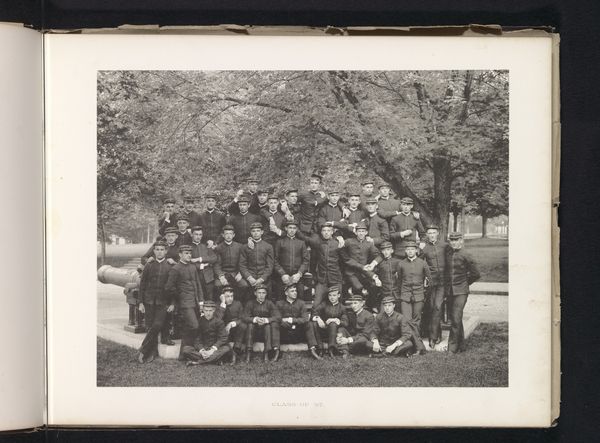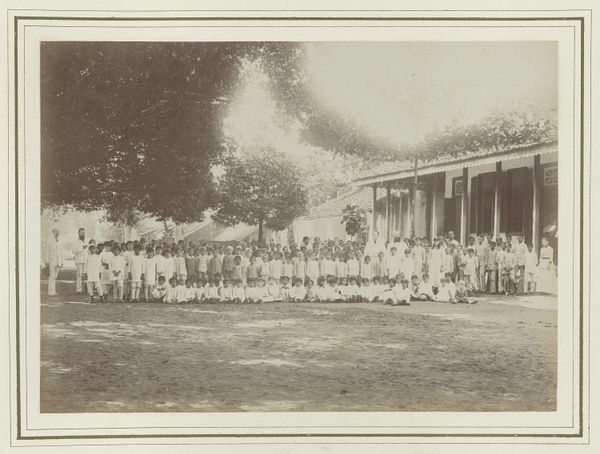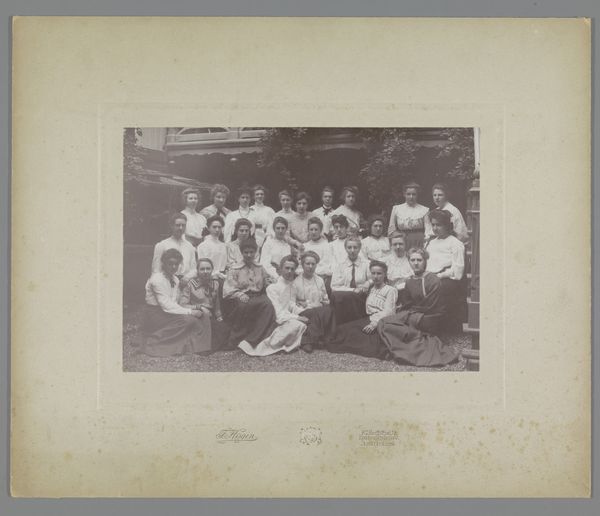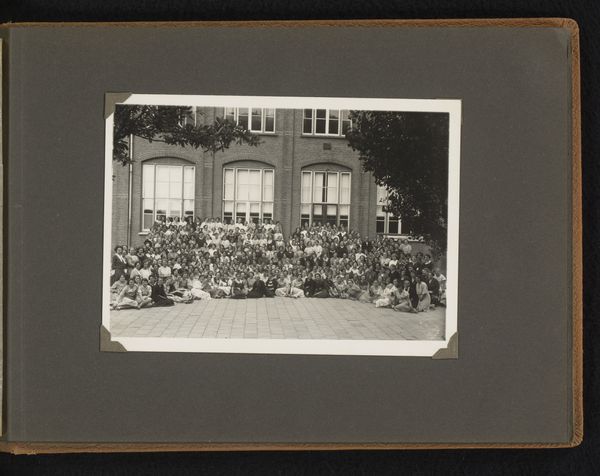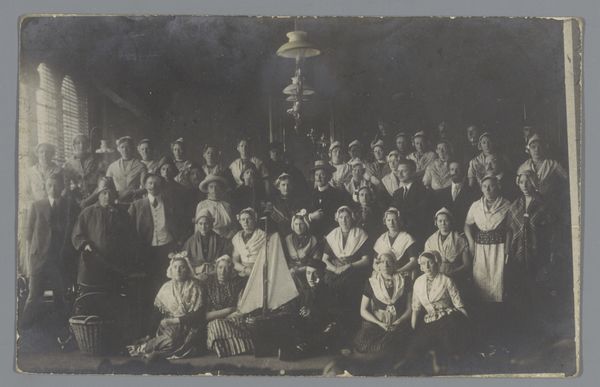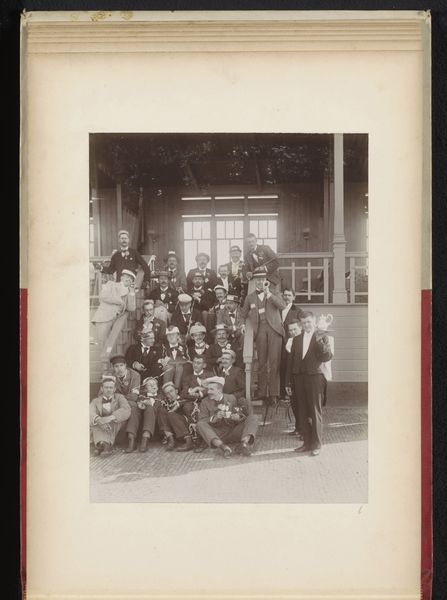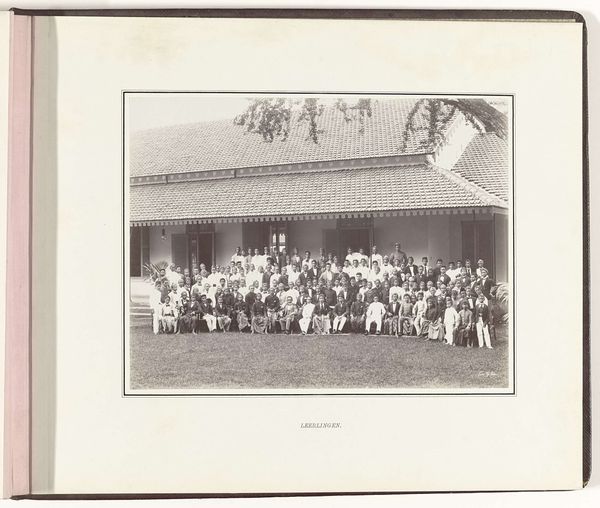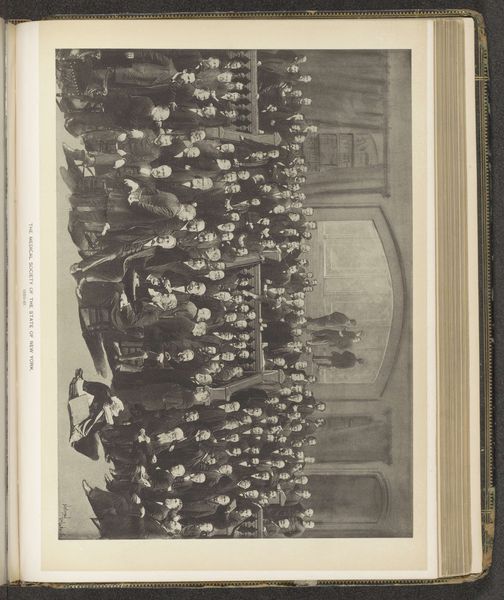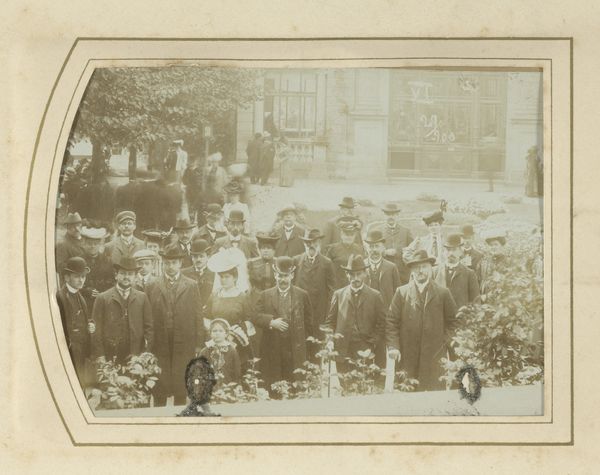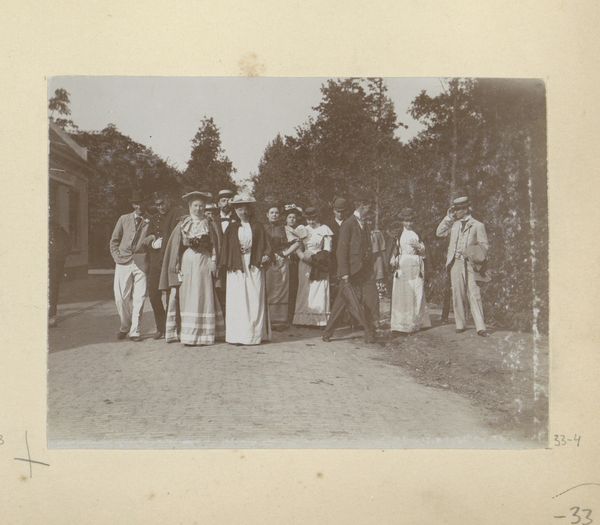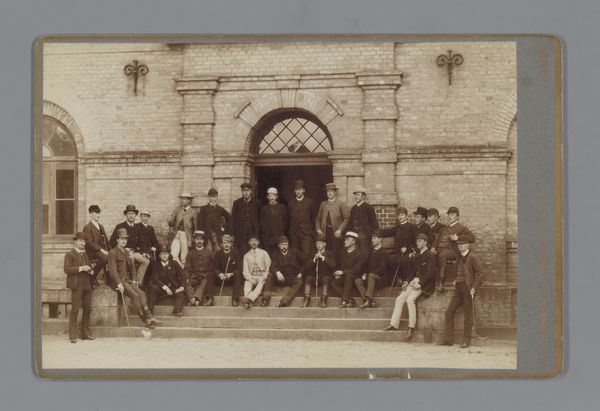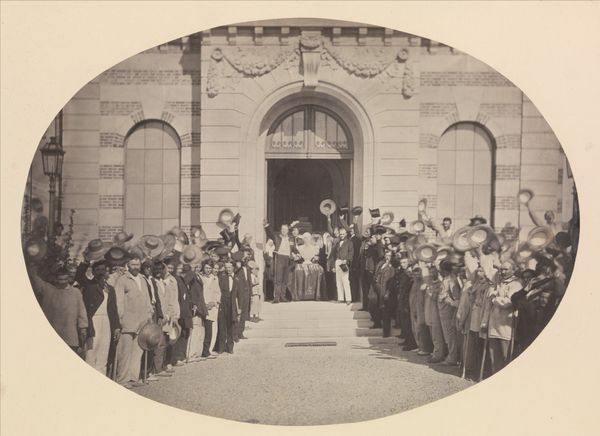
Groepsportret van de Amsterdamsche Postharmonie bij het Internationale Musikfest in Luzern, midden voor dirigent Dirk Speets Possibly 1925 - 1926
0:00
0:00
Dimensions: height 250 mm, width 310 mm
Copyright: Rijks Museum: Open Domain
Curator: Before us, we have a group portrait from possibly 1925 or 1926. It captures the Amsterdamsche Postharmonie at the Internationale Musikfest in Luzern, their conductor Dirk Speets front and center. The work is a photographic print and it resides here at the Rijksmuseum. Editor: My first impression is how still everything is. Considering it's a musical group, the stillness evokes a strong feeling of…suspended animation. A moment held. The muted tones also add to that, contributing a certain somber quality despite what was probably a festive occasion. Curator: I see a visual echo here of formalized group identity—uniformity in dress alongside varied personal expression in pose and gaze. It tells a story of civic pride intertwined with individuality, which I find so evocative of the era. Note how their instruments are held almost as extensions of themselves. Editor: Absolutely. And that precise staging lends itself to the photographic process of the time. The depth of field, or lack thereof, collapses the background so we might focus on the figures. Though, of course, nature's presence threatens to swallow the formality through its vines, a lovely contrast! The composition directs us in horizontal layers to the key people on that central bench, from where diagonals arise. Curator: Indeed. Look too at the banners marking the Musikfest, visual anchors loaded with cultural context, reminders of shared European experience in the interwar period. The fashions of the women tell stories of changing roles, of modernity reshaping expectations. The photographic document acting as a silent witness of how such moments would never be again in just that same arrangement, even when recurring in yearly succession. Editor: You know, reflecting on that point about cultural memory you made, it’s remarkable how formal arrangements, such as the orchestra staging and backdrop choices—that architecture half-concealed by greenery—seem so characteristic. Almost cliché today, yet carrying profound emotional associations precisely because we've inherited such frames from the past. Curator: Well, considering all of these combined symbols, what strikes me most is this photograph has frozen both sound and moment for an image of cultural participation for years to come, for our analysis today. Editor: It is quite powerful—all those frozen notes, held for eternity, now informing a very contemporary perception of something bygone.
Comments
No comments
Be the first to comment and join the conversation on the ultimate creative platform.
